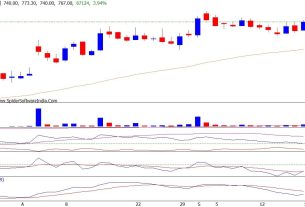
Open Interest (OI) is an incredible data point to be used for analysis of the underlying. The underlying could be a stock or index whose Futures or Options OI is in consideration.
The word ‘Build-Up’ means a structure that is made of several sections or layers fastened together. Built-Up in this context means the total OI consisting of several Futures and Options (F&O) contracts.
To appreciate the importance of Futures Build-Up, let us first understand the basic inferences that one could draw by associating change in OI alongside change in price over a period of time.
Let us work backwards and see the inferences of the combined movement of a stock or index Future OI and its price.
Price Up + OI Up = Long … Projecting Bullish Bias
Price Down + OI Down = Long Unwinding … Projecting Neutral to Bullish Bias
Price Down + OI Up = Shorts … Projecting Bearish Bias
Price Up + OI Down = Short Covering … Projecting Neutral to Bullish Bias
Now, the commitment will become clear as we move into the trade cycle. Consider a simple calculated inference from the change in OI. Rising OI means there are new contracts being created, that is, new Trading Positions are being initiated.
Similarly, decreasing number of OI means the unwinding or closure of Futures contracts. This could easily be seen as closure of Trading Positions.
Now, let us add Price Change to this mix. Even though the contract is created by a new buyer and new seller coming together, it is worth noting that between the two, one has weaker bargaining power than the other.
Due to this, if a buyer has weaker bargaining power, he will buy at an even higher price. Similarly, if a seller has weaker bargaining power, he will sell at a lower price.
Why, one may ask. Well, when you are expecting a stock priced at Rs 100 to go up to Rs 110, you would be willing to pay Rs 101, but would want to enter before it’s too late. Similarly, when you are expecting a stock priced at Rs 100 to fall to Rs 90, you would want to sell it as early as possible even though it means selling at Rs 98.
Thus, we establish that weaker bargaining power, impacts the expectation of the price movement.
So, with increment in OI (Initiation Trade), if the price rises, it indicates there are new buyers who expect the price to go up sharply. Hence, we label it as Long, which projects bullish bias. Similarly, price going down means sellers are initiating trades with firmer expectation of a bigger drop.
On the other hand, if there is a fall in OI alongside fall in price, it means closure of contracts by sellers (weaker bargaining power). We can term this as Long Unwinding. A similar argument gives us an indication of Short Covering when OI falls but with a rise in prices.
Most importantly, this data will now help distinguish the price moves. If it is long or short that means new traders are entering those Price Up or Down moves, and it is worth paying attention to as it could sustain.
On the other hand, if it is Long Unwinding or Short Covering it could very well mean that the move could just turn out to be a pullback and the directional move may not sustain.
Such analysis may not be foolproof, but is capable of improving probability as well as confidence in trading a price move.
Disclaimer: The views and investment tips expressed by experts on Moneycontrol are their own and not those of the website or its management. Moneycontrol advises users to check with certified experts before taking any investment decisions.


